The Angelus: Our Newsletter
Volume 18, Number 43

FROM THE RECTOR: TOSSING CORPORALS
The first Book of Common Prayer (1549) didn’t mention what was to become a familiar phrase for Anglicans everywhere, “fair white linen.” It was introduced to the second English Prayer Book in 1552. This is the sentence from the 1552 book: The Table hauyng at the Communion tyme a fayre white lynnen clothe upon it, shall stand in the body of the Churche, or in the chauncell, where Morning prayer and Evening prayer be appointed to bee said” (The First and Second Prayer Books of King Edward VI, Everyman’s Library [1964], 377). The present American Book of Common Prayer Book simply says, “The Holy Table is spread with a clean white cloth during the celebration” (page 406)—at Saint Mary’s the cloths used at the altar, small and large, are still linen.
Volume 18, Number 42

FROM FATHER SMITH: IN MEMORIAM
Like many New Yorkers, I remember that September 11, 2001, was a startlingly clear, cool, sunny early-autumn day here in the city. It is incongruous that one of the things that we remember about that terrible day is the weather. We do so, I suppose, because for many of us the memories of the day are so vivid and so visual, and because the smoke and the ash that blanketed lower Manhattan on that Tuesday morning were such a shocking and cruel violation. As all who read this know, on the morning of September 11, 2001, Al Qaeda terrorists boarded and then hijacked three commercial airliners and carried out coordinated attacks against the World Trade Center and the Pentagon in Washington, D.C., killing everyone on board the planes and nearly 3,000 people in the buildings and on the ground. A fourth plane crashed into a Pennsylvania field, killing all on board, after passengers and members of the crew attempted to take control from the hijackers. Many others survived the attacks but were injured. (See http://www.history.com/topics/9-11-timeline.)
Volume 18, Number 41

FROM FATHER SMITH: EVERYDAY EATING
A couple of months ago, one late Saturday afternoon, I preached a homily to a small congregation here at Saint Mary’s. It was warm in the church. We’ve had some pretty hot days here in New York this summer, and the church doors were open. But it was mercifully quiet out there in our neighborhood. They’re building a hotel on the corner of Forty-seventh Street and Seventh Avenue, and that has slowed traffic down to a trickle. The sound of outraged drivers honking their horns is an everyday occurrence. You learn to speak up, or, when it gets really bad, you close the doors. But it was Saturday afternoon getting on toward evening. The construction workers had gone home, and the late-night weekend revelers, who only emerge after the sun goes down, were still taking their naps. It was quiet in the church as we welcomed the Lord’s Day, and that was nice.
Read MoreVolume 18, Number 40

FROM THE RECTOR: DIMINUTION
While away from the parish earlier this year, I ended up attending the main service of a significant urban Episcopal parish in a significant town. As I entered I was handed a bulletin that identified the service as “Holy Eucharist, Community & Song.” Before the service the celebrant spoke to us about the special service we would be having that day. We learned there had been a workshop the day before and that the content of the workshop would be shaping our morning worship. This announcement seemed to assume that everybody present knew and understood the parish’s liturgical traditions and customs. There was no acknowledgment that visitors might be present; it was very much what I call “club religion.”
Volume 18, Number 39

FROM THE RECTOR: AUGUST NEWS
During my first year at Saint Mary’s, a parishioner observed that if one didn’t work hard in the summer, the fall would be overwhelming. That doesn’t mean people don’t get vacations; what it means is that there’s usually a lot going on. I want to tell you about some of the things that are happening here at the parish.
Volume 18, Number 38

FROM THE RECTOR: BIBILICAL INCLUSION
The Prayer Book gives permission to lengthen any lesson at the Daily Office. Reading the Bible and being honest about all of what it says and doesn’t say, I believe, is the greatest defense our minds and hearts can have against fundamentalism in all its forms. So, at Saint Mary’s we omit nothing from the New Testament at the Office. The Old Testament, however, presents different challenges.
Volume 18, Number 37
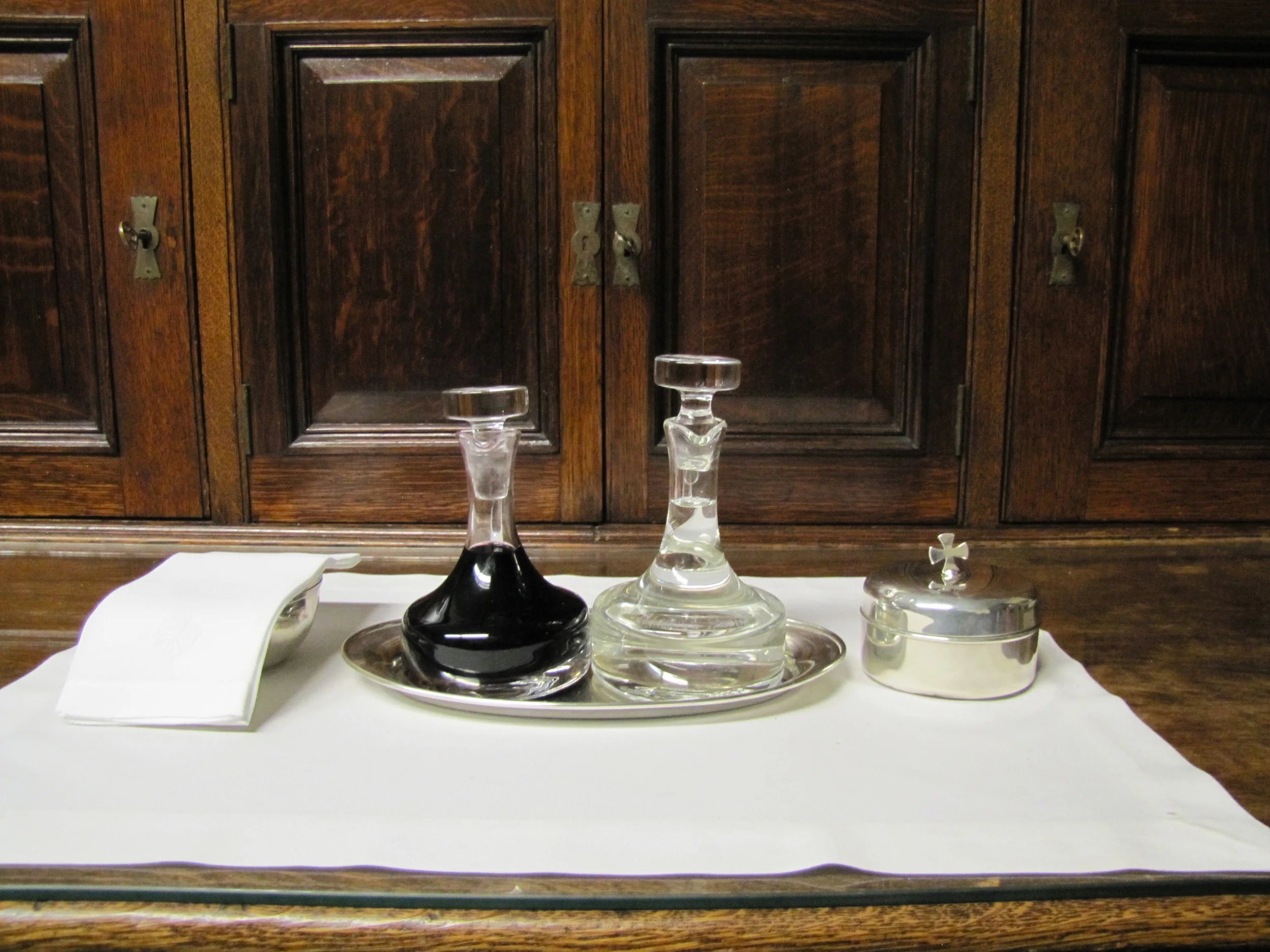
FROM THE RECTOR: FOOD AND DRINK
On Easter Day, April 18, 1965, the bulletin for the “High Mass,” as it was then called at Saint Mary’s, records the occasion when, for the first time, the Lord’s Prayer was sung by the congregation at the main service. Until that time, only the celebrant chanted it. Father Donald Garfield was the new rector. He had begun his ministry here on February 1, 1965. But an even more important change would come on Sunday, May 2, 1965: the congregation would be invited to receive communion at the 11:00 AM service. From the foundation of the parish until then, the main Sunday service was what was called a “noncommunicating High Mass”—at which only the celebrant received communion. Some will not know that the altar rail is removable and was removed for these Masses at which no one but the celebrant received communion.
Read MoreVolume 18, Number 36

FROM THE RECTOR: LORD’S PRAYER AND MORE
Last Sunday’s gospel included Luke’s version of the Lord’s Prayer—as it does every three years in the lectionary cycle. This year I had one additional resource in preparing my sermon: The Didache: A Commentary (1998) by Kurt Niederwimmer. “Didache” is a Greek word; it means “teaching.” The Didache is a text I learned about in seminary, “approximately the length of Paul’s Letter to the Galatians” (Niederwimmer, 1). It’s not a gospel, but a manual about the common life of the unnamed author’s community. Scholars now generally date this text to the 90s—contemporary with the Gospel According to John. (Matthew and Luke were probably written a decade earlier.) The Didache was known in the first centuries of the Christian era but last referenced in a text dated 829. Its rediscovery in 1883 was a major scholarly find.
Read MoreVolume 18, Number 35

FROM THE RECTOR: REAL CHANGE
When I began attending the Leadership in Ministry workshops, one of the rites of passage, as it were, was to watch the 1995 movie Cold Comfort Farm. It’s hilarious, but it’s also very much a “family systems” story. I watched the 2015 movie Spotlight this week. It is not a comedy, but it is very much a family systems theory movie. I had forgotten it won the Academy Award for best picture in January. It is based on a familiar and all-too-real, tragic story.
Volume 18, Number 34
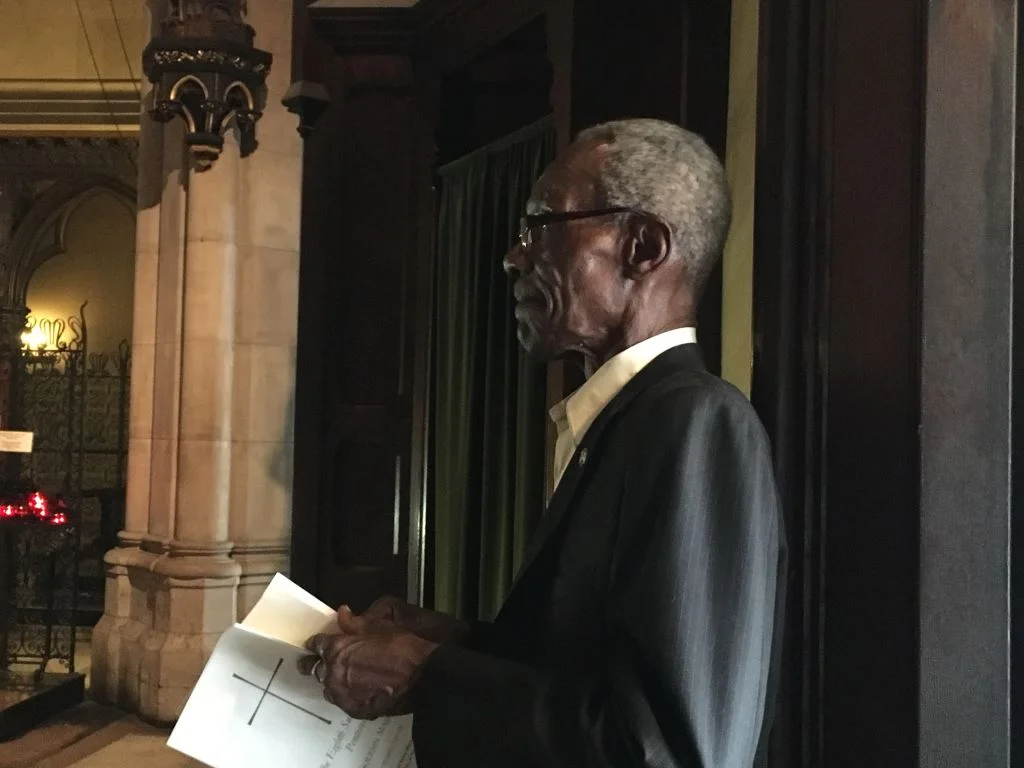
FROM THE RECTOR: GROUNDED UPON SCRIPTURE
The Bible means more to me at this point in my life than I ever imagined it would, and a very great part of this has come from the many years now I have prayed Daily Morning and Evening Prayer. It took years for me to fall in love with the Acts of the Apostles, but fall I have—and I’m pretty close to a new and better relationship with the Book of Job. The journey with the Daily Office began, at the direction of my rector, when Bishop James Montgomery, IX Bishop of Chicago, accepted me as a postulant.
Read MoreVolume 18, Number 33
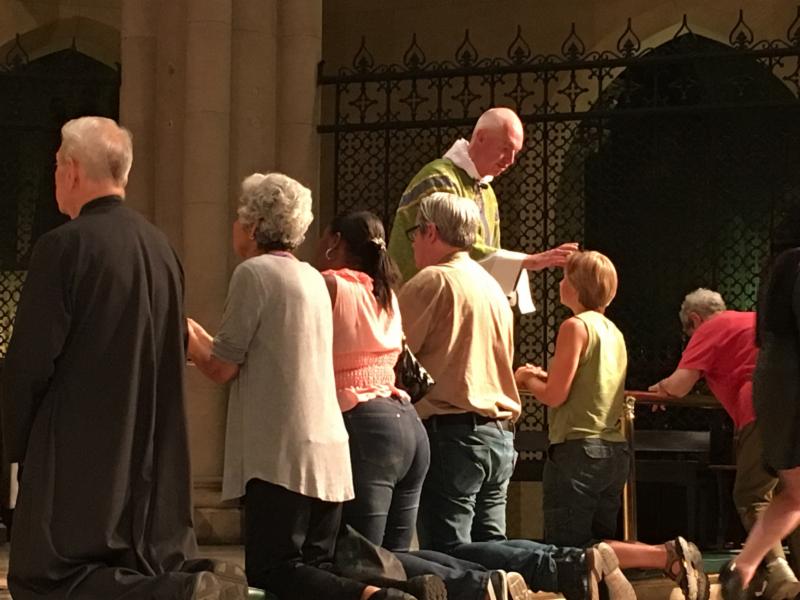
FROM THE RECTOR: OPPORTUNITIES
As I write on Friday morning, July 8, the news from Dallas, Texas, continues to come in. Sometime today—after this newsletter gets out—I expect to post on the parish webpage two very fine sermons preached by Father Peter Powell. I invite you to read both of them. In his sermon preached on June 19 he said, “The tragedy in Orlando points out for the umpteenth time that we compromise with evil to our peril.” Last Sunday he said, “We frequently act as if the only rational response to evil is to meet it head on and in kind. Is there another way?” I invite everyone to read these sermons.
Volume 18, Number 32

FROM THE RECTOR: SUMMER READING
A few weeks ago I picked up my copy of The Oxford Movement: Twelve Years: 1833–1845 by Richard William Church (1815–1890). The edition I have was published in paperback by the University of Chicago Press in 1970, and it was still selling when I got to graduate school there in the fall if 1976. I had been attending the Episcopal Church in college. I would soon become an Episcopalian at the local Episcopal parish in Kenwood and was active with the group at Brent House, the campus Episcopal chaplaincy.
Volume 18, Number 31

FROM THE MUSIC DIRECTOR: NEW PLAINSONG
Near the front of The Hymnal 1982 is a section of 288 musical selections with numbers prefixed by the letter “S.” Most of us know that the letter “S” stands for “Service Music,” and the items so designated are thus differentiated from the 718 strophic hymns (and two national songs) that follow in the hymnal. “Service Music,” then, is music for singing the texts of the liturgy in the words of the Book of Common Prayer. The settings prefixed by the “S” include acclamations, versicles, canticles, and the songs common to the celebration of the Eucharist, namely the Kyrie, Gloria in excelsis, Trisagion, Creed, Sanctus and Benedictus, and Agnus Dei, etc. Among these musical settings are portions of a Rite II Mass Ordinary named “New Plainsong” by David Hurd. These have been sung for the past few weeks at Saint Mary’s. Here is a little background as to how these settings came to be.
Read MoreVolume 18, Number 30

FROM FATHER SMITH: SEEING THE FACES, LEARNING THE NAMES
I am writing to you on Thursday morning, four days after the murders that took place at Pulse, a gay bar and dance club in Orlando. The discussion of these horrifying killings has now blossomed into a conversation about a large number of issues: terrorism, domestic and foreign; gun control; the role of powerful lobbies in our legislative processes; violence in American society; the causes of mass shootings in America; the role that religion plays, or has played, in promoting violence; the role that Islam plays, or does not play, in promoting violence and terrorism; the role that race and ethnicity may have played in the Orlando murders; Islamophobia; homophobia; and the life, background, religion, motivations, sexual orientation, and psyche of the murderer in Orlando.
Volume 18, Number 29

FROM THE RECTOR: HISTORICAL CRITICISM IN BIBLICAL STUDIES
The focus of the three-month sabbatical I took in the winter of 2009 was to relearn New Testament Greek. It was a good call for me at a good time. It reawakened my interest in New Testament studies. When I got home, the recommendations of Father Peter Powell led me to three commentaries that are really useful, Ulrich Luz on Matthew, Joel Marcus on Mark, and François Bovon on Luke. They all take, it turns out, what is called a “historical-critical” approach to Bible study.
Read MoreVolume 18, Number 28

FROM THE RECTOR: ALICE VAIL MANNING, 1947–2016
Alice Manning died unexpectedly last Saturday morning at her home. She was only 68 years old. She had pulmonary disease, but it was not considered life-threatening. She had shared an apartment with her distant cousin Linda Bridges since Linda came to the city in 1970. They became close friends—in Linda’s words, “quasi-sisters.” Alice will be mourned and missed by many. Her funeral will be Monday, June 6, here at 10:00 AM. Her body has been cremated, and her ashes will be reposed in the Vault in the Lady Chapel at the conclusion of the service of the Burial of the Dead.
VOLUME 18, Number 27
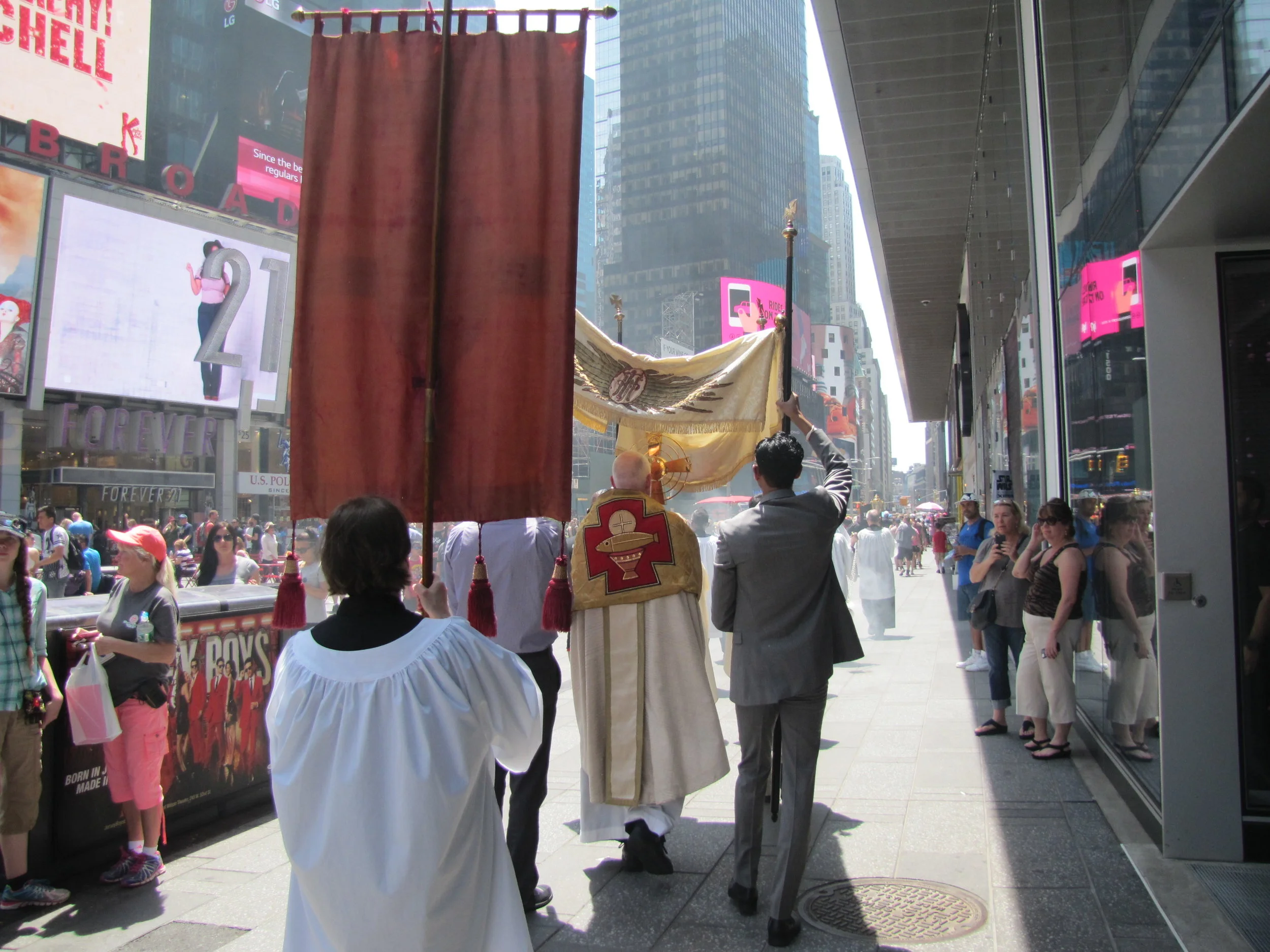
FROM THE RECTOR: CORPUS CHRISTI
A few weeks ago, a recently ordained priest who had visited Saint Mary's wrote me to ask about continuing education in liturgy for someone who was just out of seminary and who had had almost no study of the subject while earning his master of divinity degree. I pointed him to the summer school program at Saint John's University, Collegeville. And I searched through my collection of articles on liturgy to find some things to send him that I thought would be helpful. One was an article by Paul Bradshaw, "The Eucharistic Sayings of Jesus" (Studia Liturgica 35 [2005], 1-11); another was a lecture Louis Weil gave in 2007, "When Signs Signify: The Baptismal Covenant in its Sacramental Context." As I began thinking about Corpus Christi this year, I took the time to re-read both of them.
Volume 18, Number 26
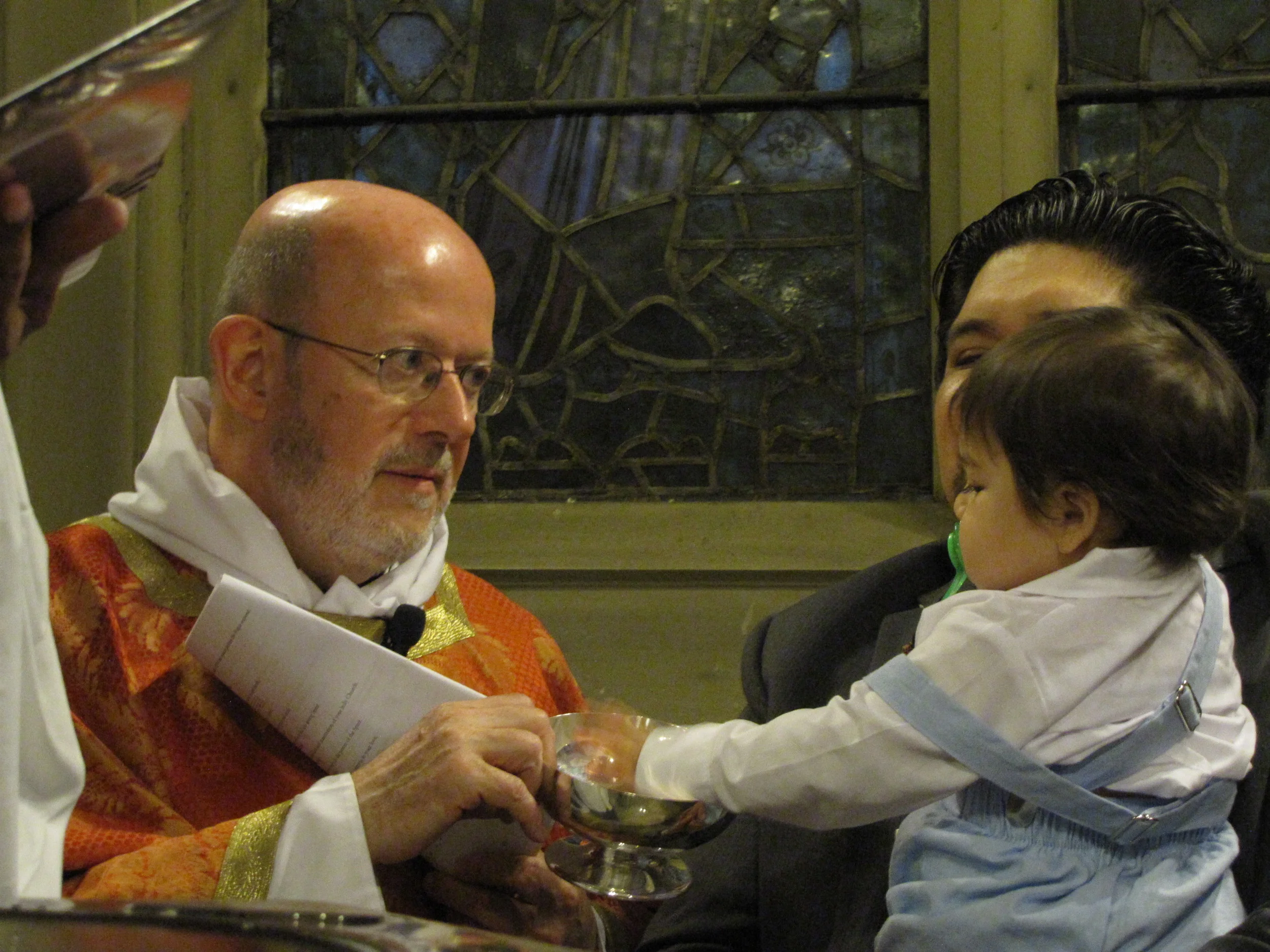
FROM THE RECTOR: A LOT TO CELEBRATE
I have the great honor to announce that Dr. David J. Hurd has accepted the position of organist and music director of Saint Mary's. He's been with us as interim organist since April. On June 1, 2016, his name will be added to the list of distinguished persons who have served this congregation as the parish musician. David had already planned a special Te Deum for this Trinity Sunday-and part of my thanksgiving to God will be for the grace that has brought him here. He is an outstanding and accomplished organist, choral director,and composer.
Read MoreVolume 18, Number 25
FROM THE RECTOR: REDISCOVERING PENTECOST
Massey Shepherd in his commentary on the 1928 Prayer Book wrote, “Three Jewish observances were adopted by the Church from the very earliest days, and transformed and charged with new meaning” (Commentary on the American Prayer Book [1950], xlvi). These were the Sabbath, Passover, and Pentecost. The gathering on the Sabbath, Saturday, was the first adopted. Christians gathered in the evening weekly for a meal focused on Christ’s Second Coming. (Paul Bradshaw and Maxwell Johnson, Origins of Feasts, Fasts and Seasons in Early Christianity [2011], 13). By the end of the first century, Sundays are beginning gradually to replace Saturdays as the Christian Sabbath (Ibid., 7).
Read MoreVolume 18, Number 24
FROM THE RECTOR: COUNTDOWN
As I write on Friday morning after a glorious Ascension Day, I’m happy to report that the 72-inch Paschal Candle is going to make it through the Easter Season. I haven’t measured what’s left (not so much, but more than last year at this point), but the decision to go with the tallest available candle was a good one. In nine days it will be Pentecost. The candle will be extinguished that evening after Evensong and moved to the baptistry. It will return to the nave during the year when we gather to bury the dead, when we gather to proclaim the resurrection to eternal life of a sister or brother in Christ.